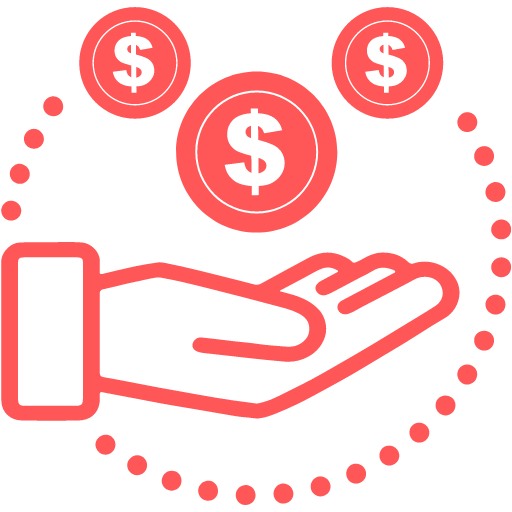Competencies
In this project, you will demonstrate mastery of the following competencies:
Develop a workforce
Propose an operating plan
Justify organizational change
Scenario
You are an HR consultant, contracted by the VP of an LLC in Wilmington, Delaware, to solve their internal challenges. This U.S. office is a branch of a larger Singaporean software solutions organization that has a total of 140 employees and generates $1M in revenue per year. The CEO of this organization, headquartered in Singapore, wants to explore new markets in the United States, gain access to new customers, diversify risk, leverage resources, and increase profits.
Unfortunately, the newly formed U.S. branch has been facing several problems from the beginning.
Employees at the call center and the sales and marketing division are disengaged and emotionally fatigued due to contradictory communication between the branch’s leadership and the leadership at the Singaporean headquarters.
The branch team members feel frustrated and undervalued as a result of conflicting feedback from their VP and management team.
Messages from leadership lack consistency, especially regarding policies and practices related to human resources.
There is no training for team members.
Communication problems between the Singaporean headquarters and U.S. branch are resulting in low employee morale.
Overall, the standard operating procedures (SOP) followed successfully at the headquarters in Singapore could not be replicated at the U.S. branch. As a result, the CEO’s vision of successfully furthering expansion into the U.S. market remains unfulfilled.
Your goal as an HR consultant is to create a change management toolkit that includes the following:
A needs assessment or change readiness audit
An organizational change management plan
A change management communication plan
A letter recommending strategies to ensure that the changes and their benefits are retained
To create the toolkit, you will compile your work from Milestones One and Two. So far, you have completed your change readiness audit and created a change management plan. Now, you will record and share a presentation to demonstrate your change management communication plan. This plan should include your recommendations for workforce development techniques and how you plan to communicate these to employees and leadership of the U.S. branch, as well as leadership at the Singaporean headquarters.
It is not enough to implement change successfully; efforts should also be made to sustain the change. You must also write an executive letter to the VP of the U.S. branch, recommending strategies and best practices to ensure that the changes are implemented and maintained.
Directions
Change Management Toolkit
Part One: Change Readiness/Needs Assessment Audit Report
Submit your change readiness report from Milestone One that was created according to the following criteria. Be sure to revise your report based on feedback you received on your milestone. In this report prepared for the VP, you will discuss the change readiness of the workforce and leadership, willingness and capabilities for change, and any historical barriers to change from past planned or unplanned change management experiences.
Use the Employee Engagement Survey, Leaders’ Self-Evaluations, Exit Interviews, and Forms of Resistance Grid from the Supporting Materials section to assess the change-readiness of employees of the U.S. branch.
Specifically, you must address the following rubric criteria:
Based off the Employee Engagement Survey data, create visuals that illustrate areas in need of change, specifically in the U.S. branch. Your visuals must address the following:
Appraisal, job-role stagnation, and promotion or recognition
Apathy or disinterest regarding the vision, mission, and values of the organization (Singaporean headquarters and U.S. branch)
Lack of trust in managers, especially senior leaders
Impressions about the organization’s (Singaporean headquarters and U.S. branch) attitude to inclusion and diversity
Justify your selection of data points from the Employee Engagement Survey results
Discuss employees’ confidence in change management practices.
Consider the information available through the Employee Engagement Survey and Leaders’ Self-Evaluations.
Do employees have a high degree of confidence in the organization’s leadership? Explain your reasoning.
Explain the urgency for change at the employee and leadership level.
Analyze the middle managers’ (team leads’) role in creating an adoption mindset:
How could they serve as a bridge between the senior leaders and the frontline staff?
Are they ready to take ownership of the proposed change? Explain your reasoning.
How do leadership styles and power distribution impact change readiness?
Identify opportunities to increase change readiness/trust at the U.S. branch:
Why are some employees more accepting of change while others might be more resistant?
How does the Forms of Resistance Grid explain the common reasons for resistance to change?
Use the Exit Interviews and the Forms of Resistance Grid, to discuss any two forms of resistance from this list: ambivalence, peer-focused dissent, upward dissent, sabotage, and refusal/exit.
Use Hofstede’s cultural dimension model and the Exit Interviews, Employee Engagement Survey, and Leaders’ Self-Evaluations to explain cultural considerations that may have created difficulties for the employees of the U.S. branch to adjust to the Singaporean headquarters’ SOPs.
Summarize the importance of cultural considerations using Hofstede’s Cultural Dimensions Model in the context of the U.S. branch and the Singaporean headquarters.
Explain how Hofstede’s model helps analyze cultural differences based on specific evidence and not on pre-conceived notions about different cultures.
Discuss how differences in specific dimensions of Hofstede’s model may result in misunderstanding and change management frustration or failure.
Discuss individualism and one other dimension from the list below that might impact the cross-cultural communication and business practice differences among the U.S. and the Singaporean employees:
Uncertainty avoidance
Power distance
Long-term orientation
Part Two: Change Management Plan
Submit your change management plan from Milestone Two that was created according to the following criteria. Be sure to revise your plan based on feedback that you received on your milestone. In this report prepared for the VP, you will detail the strategy to convince the workforce to implement the changes.
Refer to the Case for Change Guide and other company data, such as the Leaders’ Self-Evaluations, the Vision, Mission, and Strategic Goals document, and the Employee Engagement Survey (all linked below in Supporting Materials). Ensure that the report details the pre-implementation and implementation phases of the change management plan.
Specifically, you must address the following rubric criteria:
Identify two key stakeholders or sponsor roles for the change process from the Singapore headquarters and the U.S. branch.
Refer to the Leaders’ Self-Evaluations document for additional context.
Discuss the significance of each stakeholder’s role in gaining buy-in, acceptance, and support for change across departments.
How can each stakeholder improve the change initiatives’ likelihood of success (for example, by acting as opinion leaders, connectors, counselors, and journalists)?
Identify strategic goals that align with the change management plan and provide rationale. Consider the following in your response:
Refer to the Vision, Mission, and Strategic Goals document; U.S. Branch Overview; and Leaders’ Self-Evaluations.
Ensure there is alignment of the change management plan with the strategic goals of the organization (Singaporean headquarters and U.S. branch).
Research emerging trends that could influence employees of the U.S. branch.
Explain how improvements to organizational systems can ensure successful and sustained behavioral change.
Refer to the Exit Interviews to identify the areas of change.
What are the processes, procedures, or policies that need improvement?
How will these improvements impact behavioral change of employees at the U.S. branch?
Recommend enhancement strategies for team collaboration.
Refer to the Exit Interviews and the Leaders’ Self-Evaluations to identify the problems of team collaboration.
What are the reasons for the lack of collaboration between team members across both locations of the organization?
How can an individual performer become a team player to improve team collaboration?
How should leadership behavior change to build trust?
Determine a change management model that can be used at the U.S. branch and provide justification.
Based on your evaluation of the challenges that the U.S. branch is currently facing, choose from the following change management models:
Kotter’s Change Management Model, Lewin’s Change Management Model, or the ADKAR Change Management Model
How would you use the model you chose at the U.S. branch?
Describe the steps needed to implement the change management model at the U.S. branch. Support your response with research.
How would you mitigate and remove any roadblocks in the change management process?
What are your plans to deal with the impact of planned and/or unplanned changes and any contingencies?
What milestones need to be accomplished for change implementation to succeed?
How would you measure success on your plan?
Part Three: Change Management Communication Plan and Continuity Strategies
Change Management Communication Plan Presentation
Submit a creative and polished PowerPoint presentation with narration to share your change management communication plan. The communication plan should include your recommendations for workforce development techniques and how you plan to communicate these to the U.S. branch employees.
Specifically, you must address the following rubric criteria:
Define the audience by performing a target audience analysis. (slides 1–2)
Determine core and audience-specific communication objectives and messages, including appropriate tone. You may include the following information (slides 3–4):
Discuss goals of the communications campaign. You may consider the following points:
Why is this communication campaign needed?
What are the essential topics to communicate to company leadership?
What do front-line employees need to know as they experience and deal with the impact of change?
How will you convey need and urgency for change? Discuss What’s in It for Me (WIIFM).
Use a story or a graphic to connect with the change vision for success to the communication plan.
Define and communicate new performance expectations and what stakeholders need to do to prepare for change.
Recommend two workforce development techniques to support employees’ adaptation to change and build on existing skills and strengths. Consider the following (slides 5–6):
What do you want the employees of the U.S. branch to do differently?
How should the organization’s leadership support employees during the change, through training and development programs to address the gaps?
Determine and review the best delivery channels for each communication based on the target audience analysis. Select a minimum of three channels as part of a multi-prong communication strategy. You may include the following information (slides 7–8):
What would be the communication timeline for delivery of all messages? Create an outline.
How often will the branch’s change initiators communicate with this audience?
Outline communication responsibilities and assignments. Who is responsible for leading communications with this audience?
Include your plan for a feedback loop to monitor and manage the communication campaign. (slides 9–10)
Determine metrics or key performance indicators (KPIs) to track the success of the communication campaign.
Outline how the metrics will be implemented and tracked through a feedback loop.
Executive Letter
Write an executive letter to the VP of the U.S. branch recommending a strategy and best practices for sustaining the change efforts. Specifically, you must address the following criteria:
Recommend one strategy for evaluating the business impact of change.
How can they sustain change efforts through performance management?
Recommend two best practices for ensuring new skills are applied on the job.
Include at least one reinforcement technique leadership can use to sustain change.
What to Submit
To complete this project, you must submit the following:
Part One: Change Readiness/Needs Assessment Audit Report
Submit a 2- to 3-page Word document with 12-point Times New Roman font, double spacing, and one-inch margins. Sources should be cited according to APA style. Consult the Shapiro Library APA Style Guide for more information on citations.
Part Two: Change Management Plan
Submit a 7- to 9-page Word document with 12-point Times New Roman font, double spacing, and one-inch margins. Sources should be cited according to APA style. Consult the Shapiro Library APA Style Guide for more information on citations.
Part Three: Change Management Communication Plan and Change Continuity Recommendations
Change Management Communication Plan (Presentation)
Submit a recorded PowerPoint presentation with 10–12 slides. Sources should be cited according to APA style. Consult the Shapiro Library APA Style Guide for more information on citations.
Note: Remember to use both on-screen text and narration or speaker notes in your PowerPoint slides to convey your information effectively. For example, you can use brief, bulleted lists on the slide and include detailed explanations in your narration or speaker notes. A resource explaining how to add narration to your presentation can be found under “Supporting Materials” below.
Executive Letter
Submit 2- to 3-page Word document with 12-point Times New Roman font, double spacing, and one-inch margins. Sources should be cited according to APA style. Consult the Shapiro Library APA Style Guide for more information on citations.
Supporting Materials
The following resources support your work on the milestone submissions and the project:
Case for Change Guide: This document will provide you with instructions on what to include in the change readiness report.
Employee Engagement Surveys: This document presents the results of the most recent employee engagement survey.
Exit Interviews: This document presents the views of employees who voluntarily left the company.
Forms of Resistance Grid: The infographic presents the forms of resistance that learners can use as a reference to identify forms of resistance in the change readiness report.
Leaders’ Self-Evaluations: This document includes self-evaluations drafted by managers, which is part of the performance management process.
U.S. Branch Overview: This document provides data regarding the U.S. branch’s financial position and structure.
Vision, Mission, and Strategic Goals: This will include the CEO’s compelling vision as translated by the VP.
With us, you are either satisfied 100% or you get your money back-No monkey business












